
Fundamentals
The African Communities, within the profound meditation that is Roothea’s living library, refers not merely to geographical locations or demographic groupings, but rather to a vibrant, interconnected web of shared heritage, ancestral wisdom, and enduring cultural practices that have profoundly shaped the experiences of Black and mixed-race individuals globally. Its fundamental meaning extends beyond mere presence, encompassing the deep historical roots and continuous evolution of identity, kinship, and resilience. This collective consciousness, particularly through the lens of textured hair, represents a powerful legacy passed down through generations.
The African Communities are understood as a dynamic force, a living repository of knowledge and cultural expression. This designation signifies the collective experience of people of African descent, emphasizing their profound contributions to the understanding and care of textured hair. It highlights how hair, in these communities, has always been more than a simple aesthetic choice; it has served as a language, a symbol, and a vessel for cultural transmission.
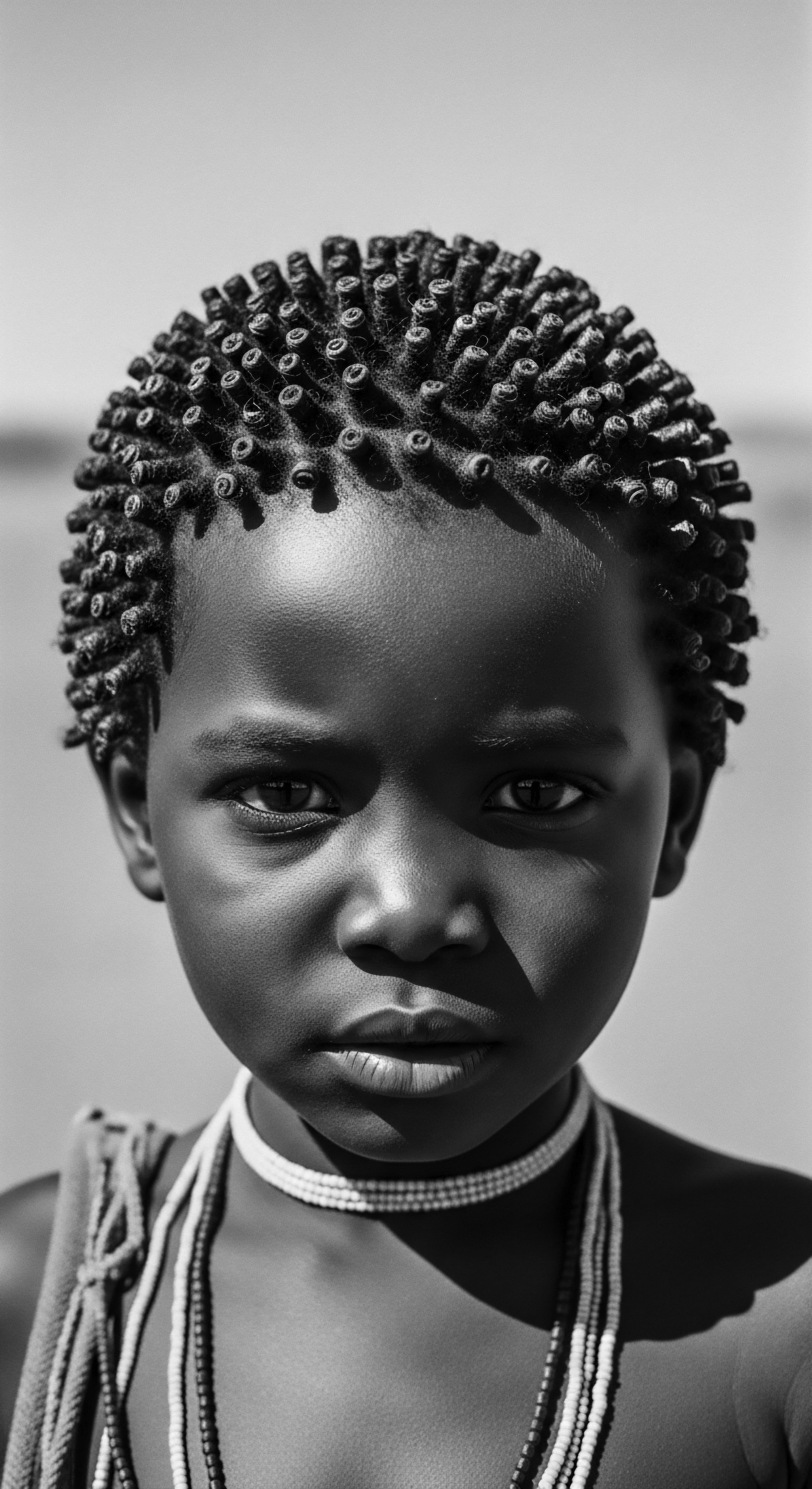
The Language of Hair in Ancient Africa
Long before colonial incursions, hairstyles in African societies were intricate systems of communication. They conveyed a person’s Social Status, Age, Marital Standing, Tribal Affiliation, and even their Spiritual Beliefs. Each braid, twist, or adornment held a specific meaning, allowing individuals to read narratives woven into the hair of their community members. This visual language underscored a deep connection between personal appearance and collective identity, where hair was an extension of one’s story and lineage.
- Yoruba Hair Traditions ❉ In Nigeria, the Yoruba people crafted elaborate hairstyles that denoted community roles, reflecting a reverence for the head as a sacred part of the body. The practice of “Irun Kiko,” or hair threading, was a traditional method for stretching hair and retaining length, dating back to the 15th century.
- Himba Hair Rituals ❉ The Himba tribe in Namibia, for instance, wore dreadlocked styles coated with a paste of red ochre and butter fats, symbolizing their connection to the earth and their ancestors, while also moisturizing and protecting the hair strands. This practice highlights a holistic approach to hair care, blending cultural symbolism with practical benefits.
- Zulu Warrior Braids ❉ Among the Zulu, intricate braids were not just a style; they were symbols of strength and honor, with each pattern often signifying a significant life event or courageous feat.
The communal act of hair styling often served as a significant bonding ritual within these societies, a time for sharing stories, wisdom, and strengthening intergenerational ties. This communal aspect is a testament to the African Communities’ understanding of hair care as a shared endeavor, a tender thread connecting individuals to their collective past and present.
The African Communities, through their historical relationship with textured hair, illuminate a profound understanding of hair as a living archive of identity and collective memory.
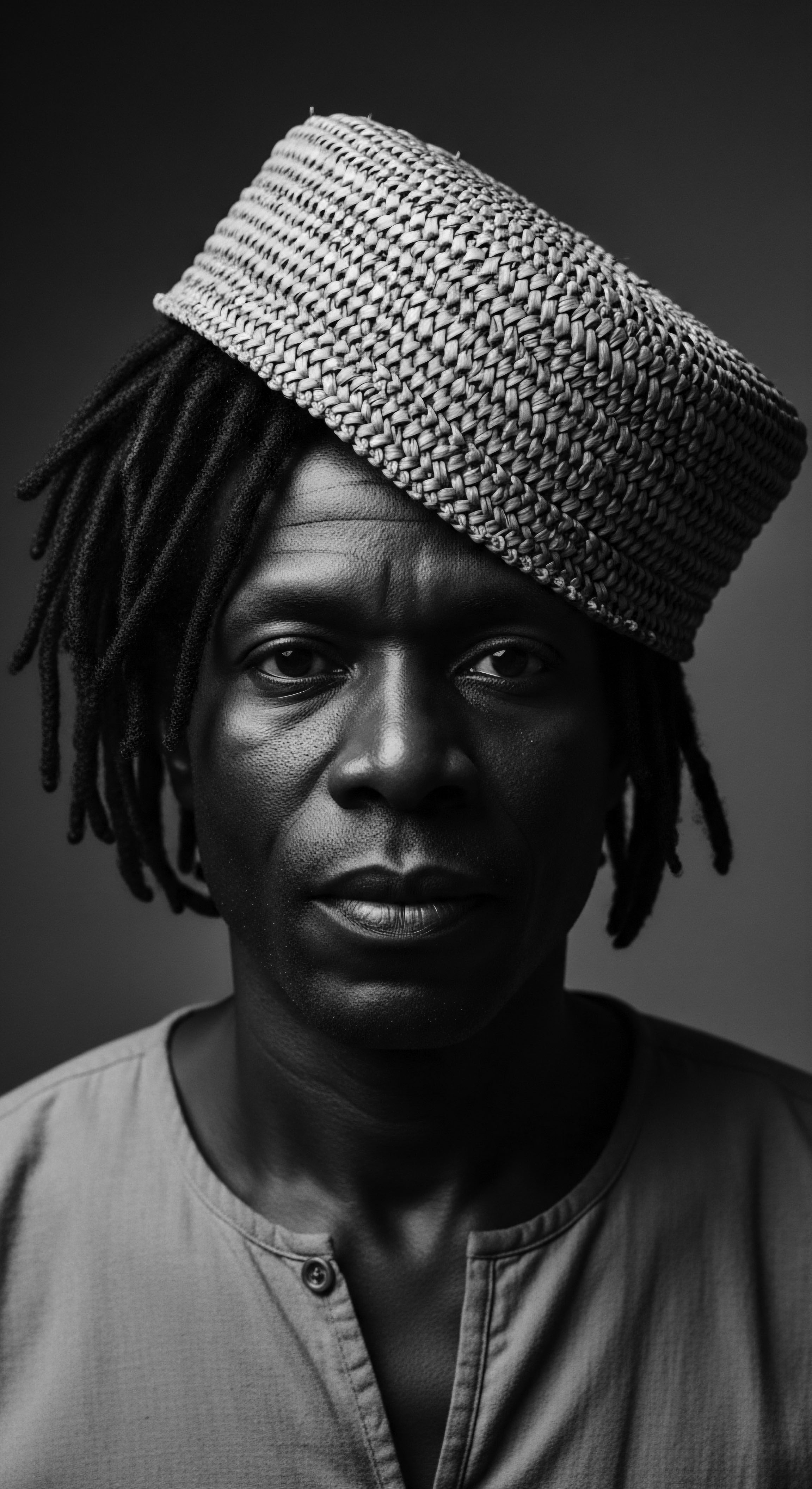
Hair as a Symbol of Resilience
The Transatlantic Slave Trade dramatically disrupted these established cultural practices. Enslaved Africans were often stripped of their traditional hair tools and methods, and their heads were frequently shaved as a means of control and dehumanization. This brutal act aimed to sever their ties to their heritage and erase their identity. Despite these attempts at cultural erasure, hair continued to serve as a powerful symbol of resistance and self-preservation.
In the Americas, cornrows, often referred to as “canerows” in the Caribbean, became more than just a practical style; they transformed into a covert communication system. Enslaved women would braid intricate patterns into their hair, which reportedly served as maps to escape routes or indicated where to find water and provisions. This ingenious use of hair as a tool for liberation stands as a powerful example of the African Communities’ enduring spirit and their ability to subvert oppressive systems through the very essence of their being. This historical example underscores the deep, often unspoken, significance of textured hair heritage as a medium of survival and defiance.
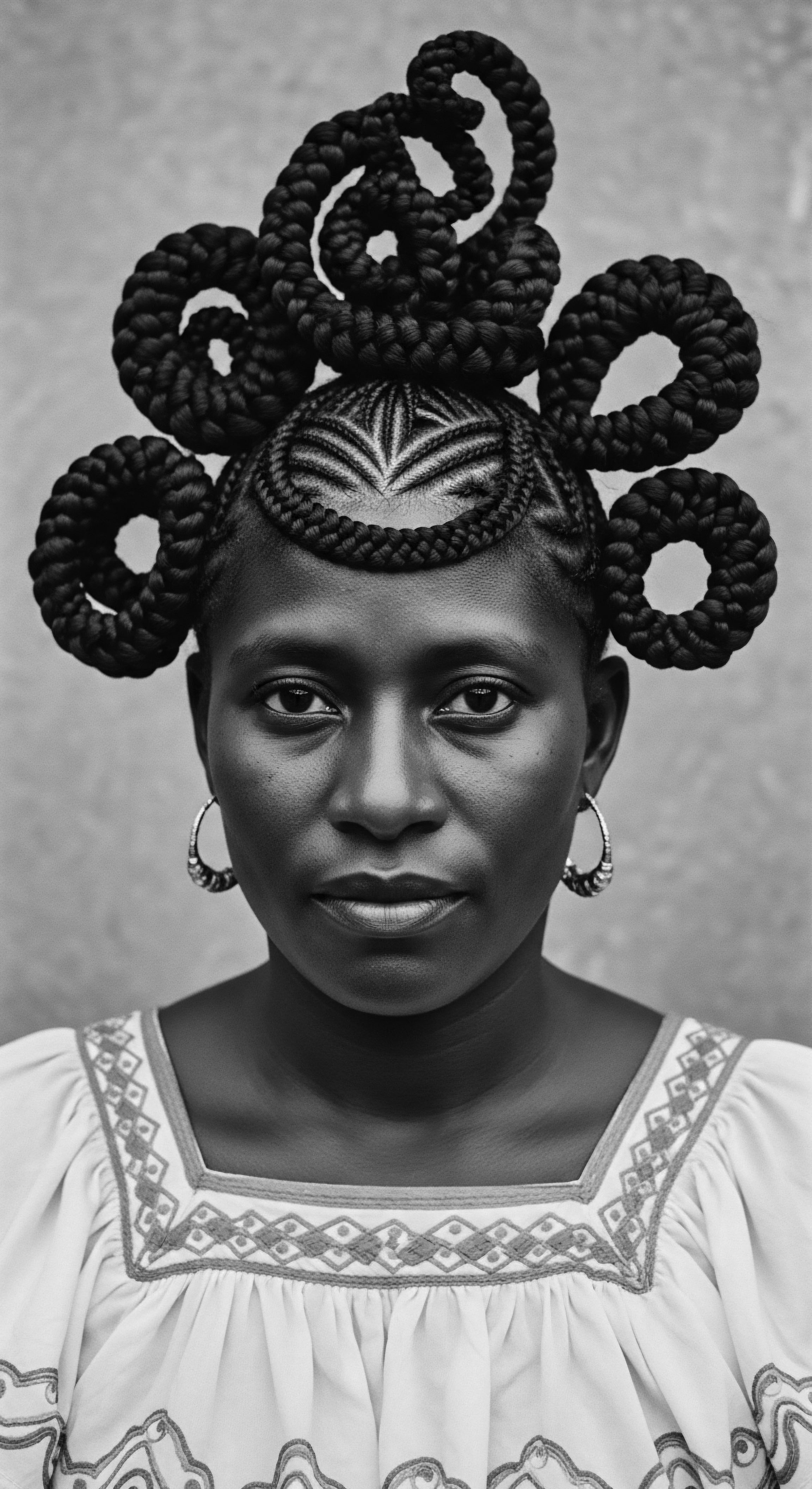
Intermediate
Expanding upon its foundational meaning, the African Communities represents a complex interplay of genetic inheritance, environmental adaptation, and profound cultural innovation in the context of textured hair. This intermediate exploration delves into the biological uniqueness of African hair, its historical trajectory through periods of immense challenge, and the ways in which these communities have consistently adapted and redefined beauty standards. The meaning here deepens to include the resilience inherent in maintaining and celebrating hair heritage despite external pressures.
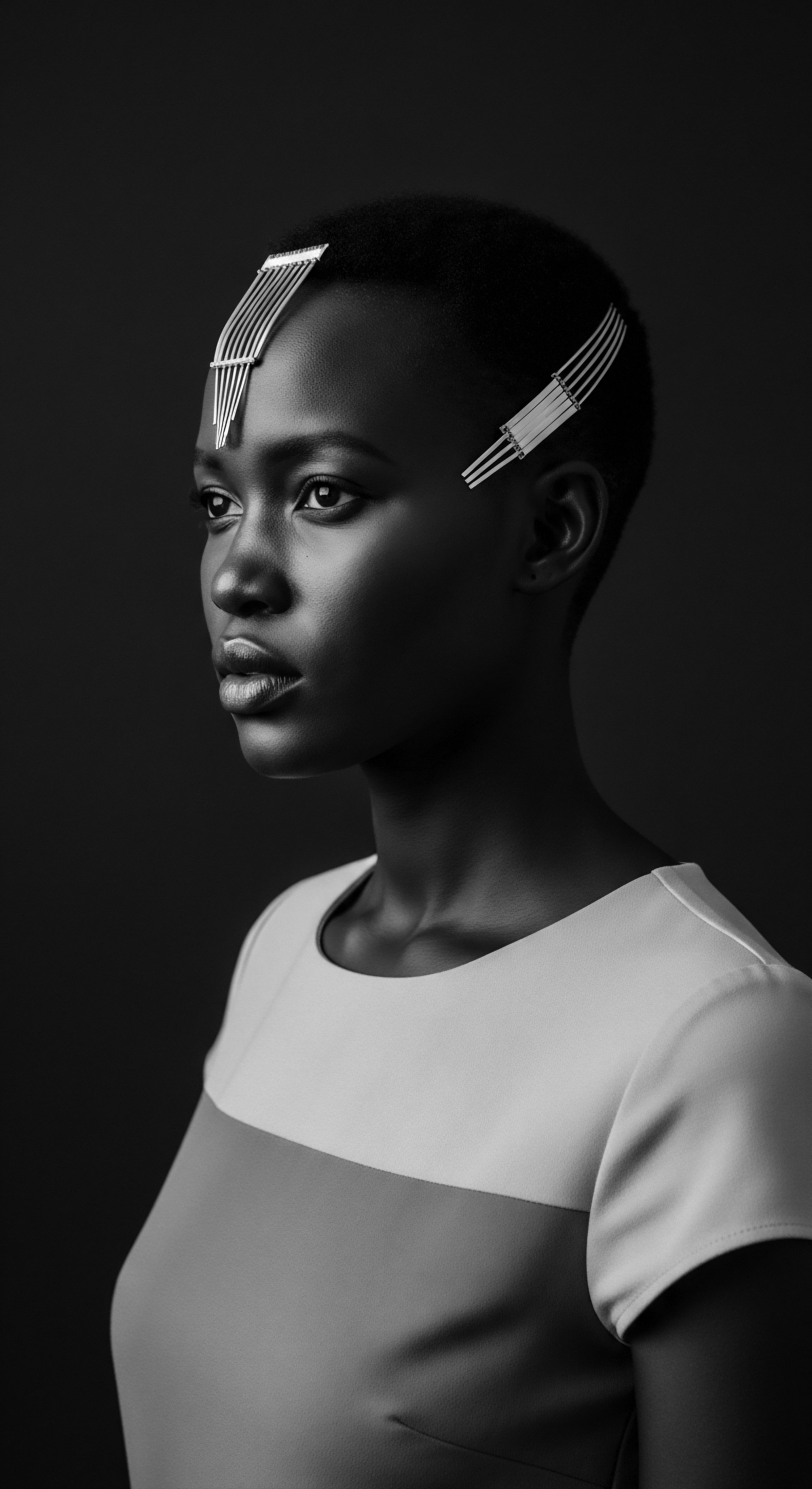
Echoes from the Source ❉ The Biology of Textured Hair
The unique morphology of African hair, characterized by its tightly coiled, helical structure, is a direct consequence of its follicular architecture. Unlike the round follicles that produce straight hair or the oval follicles yielding wavy hair, African hair grows from nearly flat, ribbon-like follicles that are sharply curved. This distinct shape leads to hair strands that are more elliptical in cross-section and exhibit a higher degree of curvature along their length.
This structural characteristic, while contributing to the remarkable volume and versatility of textured hair, also presents specific care considerations. African hair tends to have a lower density of hair follicles compared to other hair types, and its curved growth pattern creates points of weakness along the hair shaft, making it more susceptible to mechanical stress and breakage. Despite often having a higher lipid content, its structure can contribute to a perception of dryness, necessitating particular attention to moisture retention. Understanding these biological nuances is crucial for developing effective hair care strategies that honor the inherent nature of textured hair.
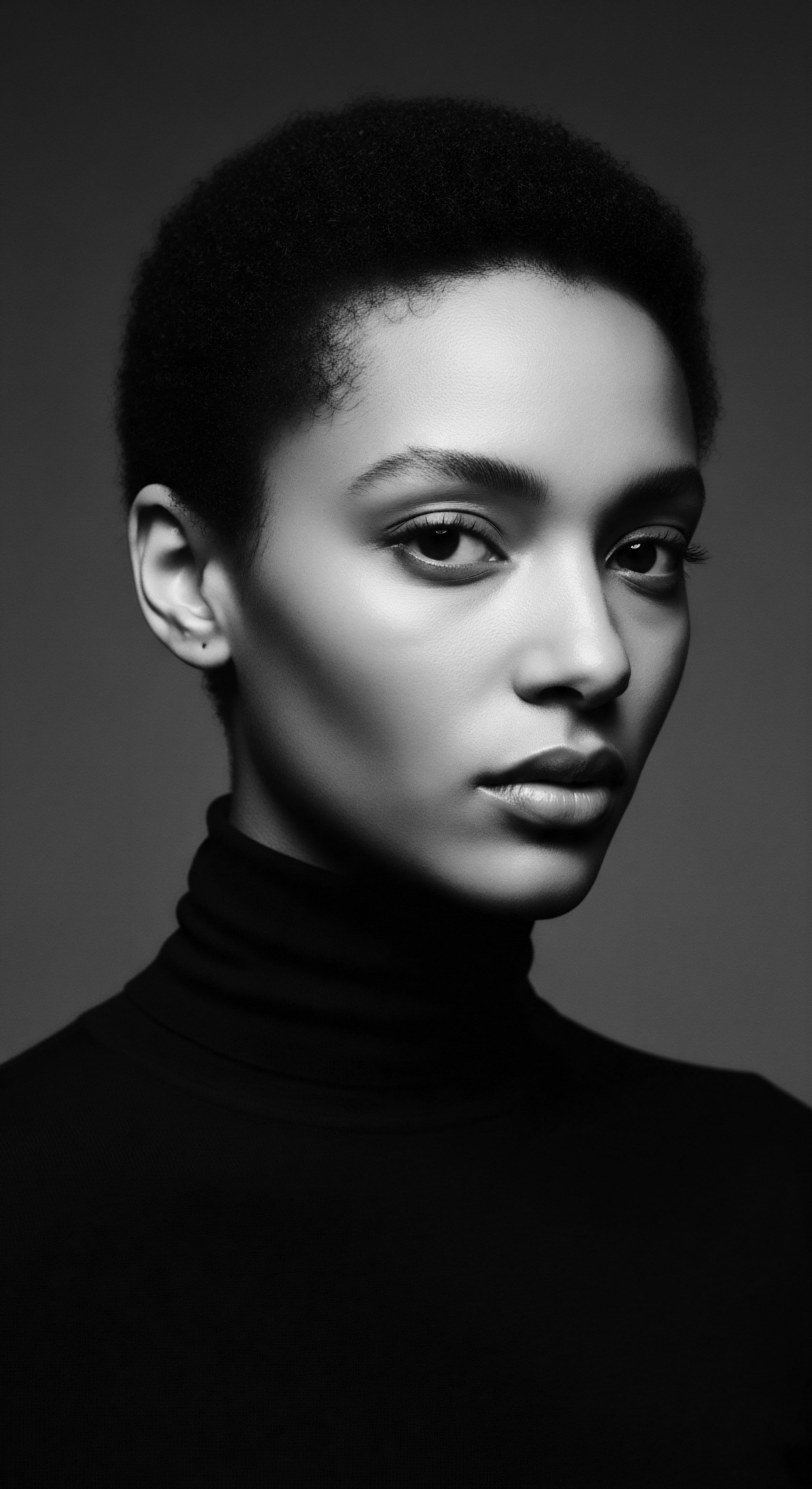
The Tender Thread ❉ Intergenerational Transmission of Care
The transmission of hair care knowledge within African Communities is a powerful testament to cultural continuity and ancestral wisdom. These practices are not merely routines; they are rituals, often passed down through generations, embodying a deep understanding of hair health and its connection to overall well-being. This intergenerational sharing of knowledge has been vital in preserving traditions even when formal systems sought to dismantle them.
Consider the case of traditional hair threading, known as Irun Kiko among the Yoruba people of Nigeria, which dates back to the 15th century. This protective styling method involves using flexible threads to wrap sections of hair, forming three-dimensional patterns. Beyond its aesthetic appeal, threading served a practical purpose, helping to stretch the hair and retain length by protecting it from breakage. Such practices illustrate a sophisticated understanding of hair mechanics and preservation long before modern scientific validation.
| Traditional Practice/Ingredient Hair Threading (Irun Kiko) |
| Cultural Significance/Historical Use Protective styling for length retention, social expression in Yoruba culture (15th century). |
| Modern Understanding/Application Recognized as a low-manipulation protective style that minimizes breakage and promotes hair growth. |
| Traditional Practice/Ingredient Chebe Powder |
| Cultural Significance/Historical Use Used by Bassara/Baggara Arab women in Chad for long, lustrous hair; sourced from local plants. |
| Modern Understanding/Application Scientifically recognized for its ability to strengthen hair and reduce breakage, supporting length retention. |
| Traditional Practice/Ingredient Marula Oil |
| Cultural Significance/Historical Use Traditional moisturizer in Mozambique and South Africa for skin and hair. |
| Modern Understanding/Application Valued in modern formulations for its oleic acid content and antioxidant properties, beneficial for moisturizing and protecting hair. |
| Traditional Practice/Ingredient Rooibos Tea |
| Cultural Significance/Historical Use Traditional South African beverage, also used for hair care. |
| Modern Understanding/Application Possesses antimicrobial and antioxidant properties, supporting a healthy scalp and hair growth. |
| Traditional Practice/Ingredient African Black Soap |
| Cultural Significance/Historical Use Traditional West African soap, often made from shea butter and plant ash. |
| Modern Understanding/Application Utilized for gentle cleansing of hair and scalp, though its high pH requires careful consideration in modern formulations. |
| Traditional Practice/Ingredient These practices demonstrate a deep, ancestral knowledge of natural resources for hair wellness, a legacy that continues to inform contemporary care. |
The deliberate choices made in hair care, from selecting specific botanicals to employing particular styling techniques, reflect a profound connection to the land and an inherited wisdom regarding its offerings. This collective experience reinforces the notion that hair care is not merely about external appearance but about honoring one’s ancestral ties and maintaining a holistic sense of self.
The enduring spirit of the African Communities is powerfully mirrored in the adaptability and expressiveness of textured hair, a testament to resilience across time.
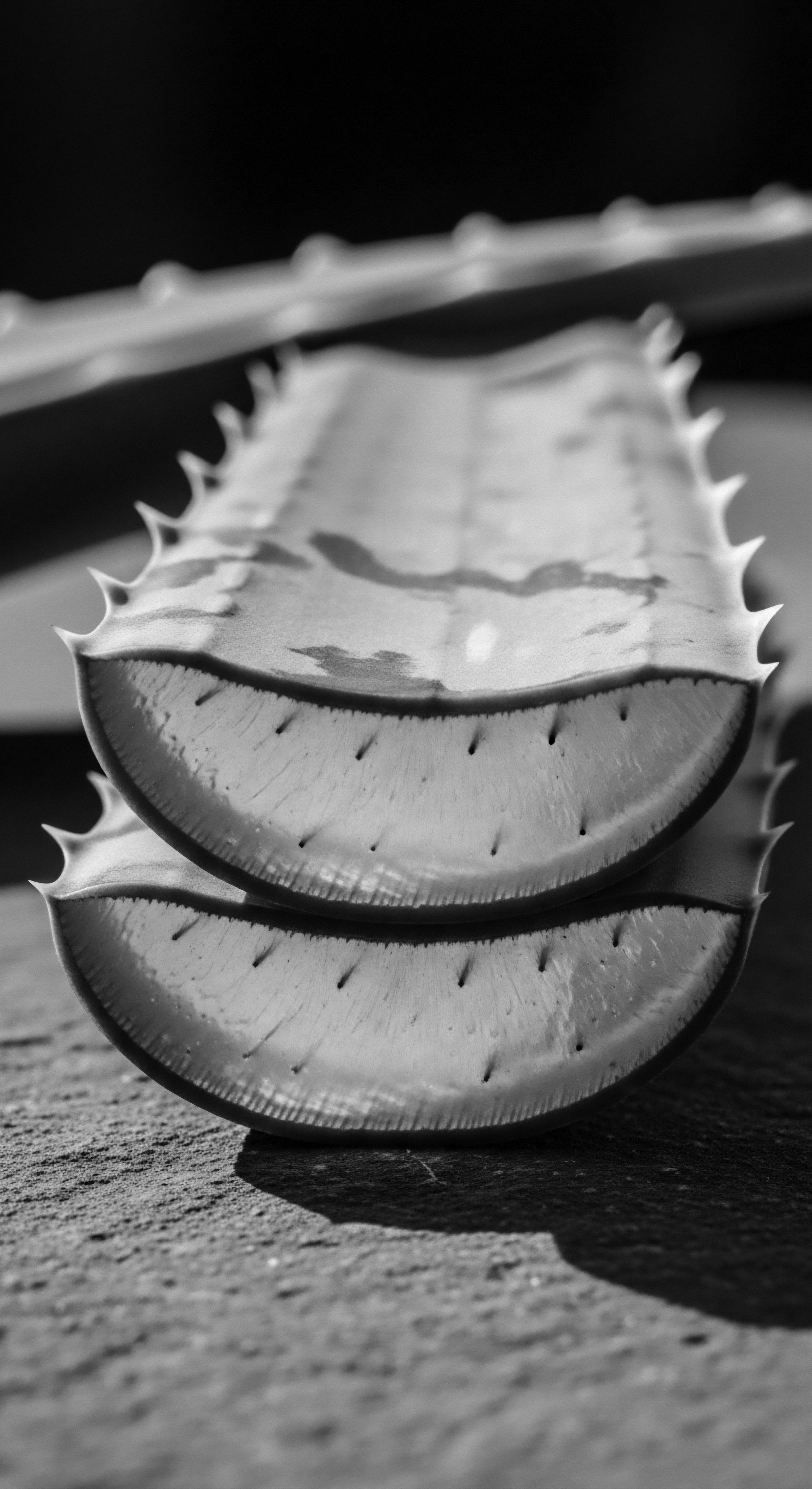
The Unbound Helix ❉ Hair as a Voice of Identity and Resistance
During the periods of enslavement and colonization, African hairstyles transformed into potent symbols of cultural preservation and defiance. When forced to shave their heads, enslaved individuals found ways to reclaim their identity through the very hair that remained. Headwraps, for example, became emblems of dignity and resilience, protecting hair while subtly asserting cultural heritage.
A particularly compelling historical example of hair as resistance comes from Colombia, where enslaved African women ingeniously used cornrows to create maps and communicate escape routes to freedom. Ziomara Asprilla Garcia, an Afro-Colombian hair braider and oral historian, describes how styles like “departes,” characterized by thick, tight braids tied into buns, signaled plans for escape, while curved braids depicted the roads to be used. This powerful act of encoding vital information within hairstyles underscores the deep cultural and strategic significance of hair for the African Communities during times of profound oppression. This practice, often referred to as a “hair map,” allowed enslaved individuals to preserve their intelligence and agency in the face of dehumanization.
The Civil Rights Movement of the 1960s and 70s saw a resurgence of natural hairstyles, with the Afro becoming a powerful statement against Eurocentric beauty norms. Icons like Angela Davis and the Black Panther Party popularized the Afro as a symbol of Black pride, unity, and resistance, signaling a collective embrace of African heritage. This period marked a deliberate shift, where “bad hair” became “good hair,” reinforcing the idea that hair was a strong connecting force within the Black collective and a counter-hegemonic movement. This journey reflects the ongoing struggle and triumph of the African Communities in asserting their inherent beauty and cultural autonomy.
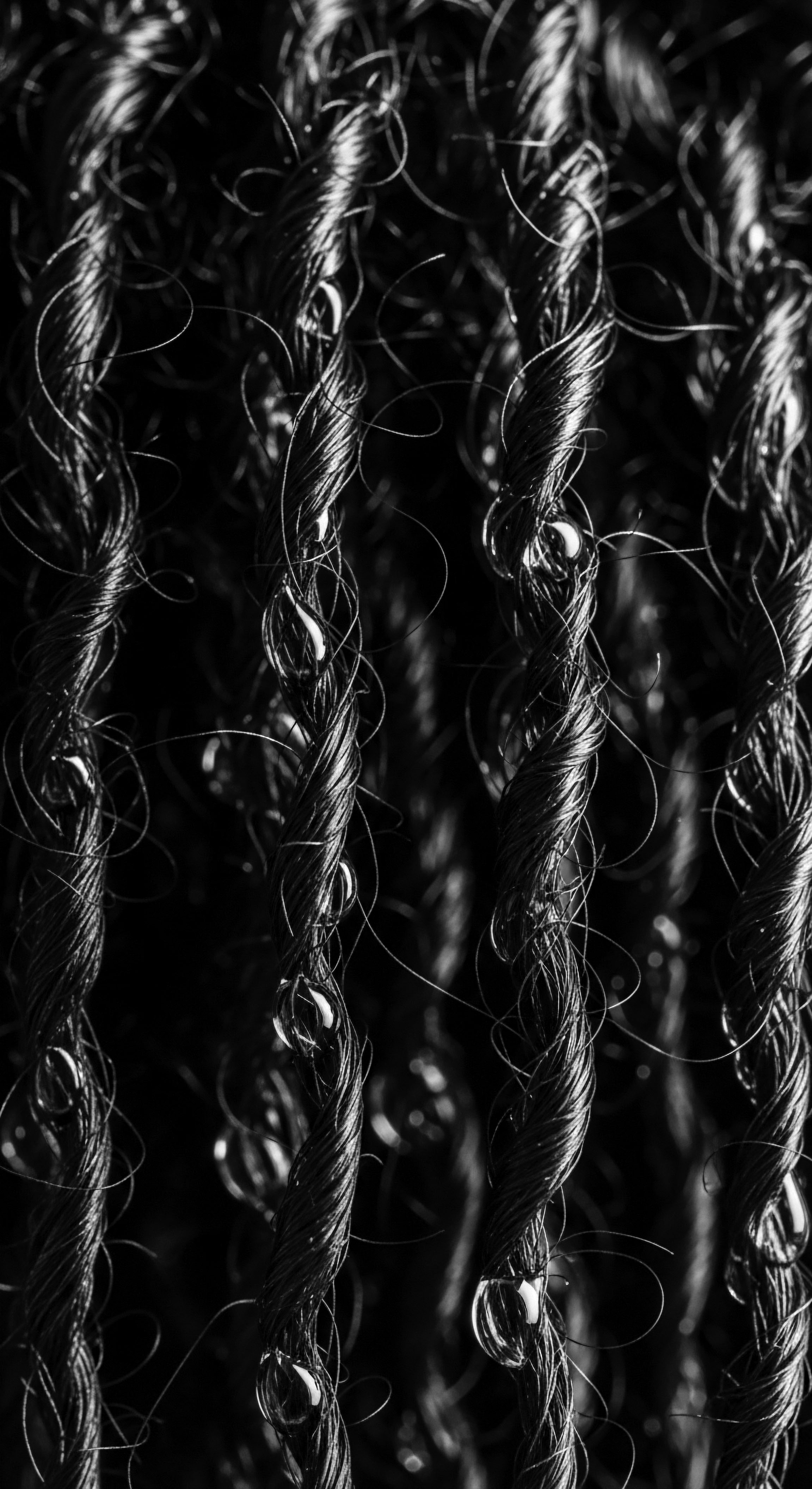
Academic
The academic delineation of the African Communities, particularly within Roothea’s framework, transcends a mere descriptive overview, offering a rigorous examination of its complex biological underpinnings, socio-historical evolution, and profound psycho-cultural implications for textured hair heritage. This academic interpretation delves into the genetic predispositions, the enduring legacy of systemic oppression, and the contemporary movements that seek to reclaim and celebrate the intrinsic value of Black and mixed-race hair. The meaning here is multi-layered, signifying a site of both historical contestation and continuous cultural affirmation.
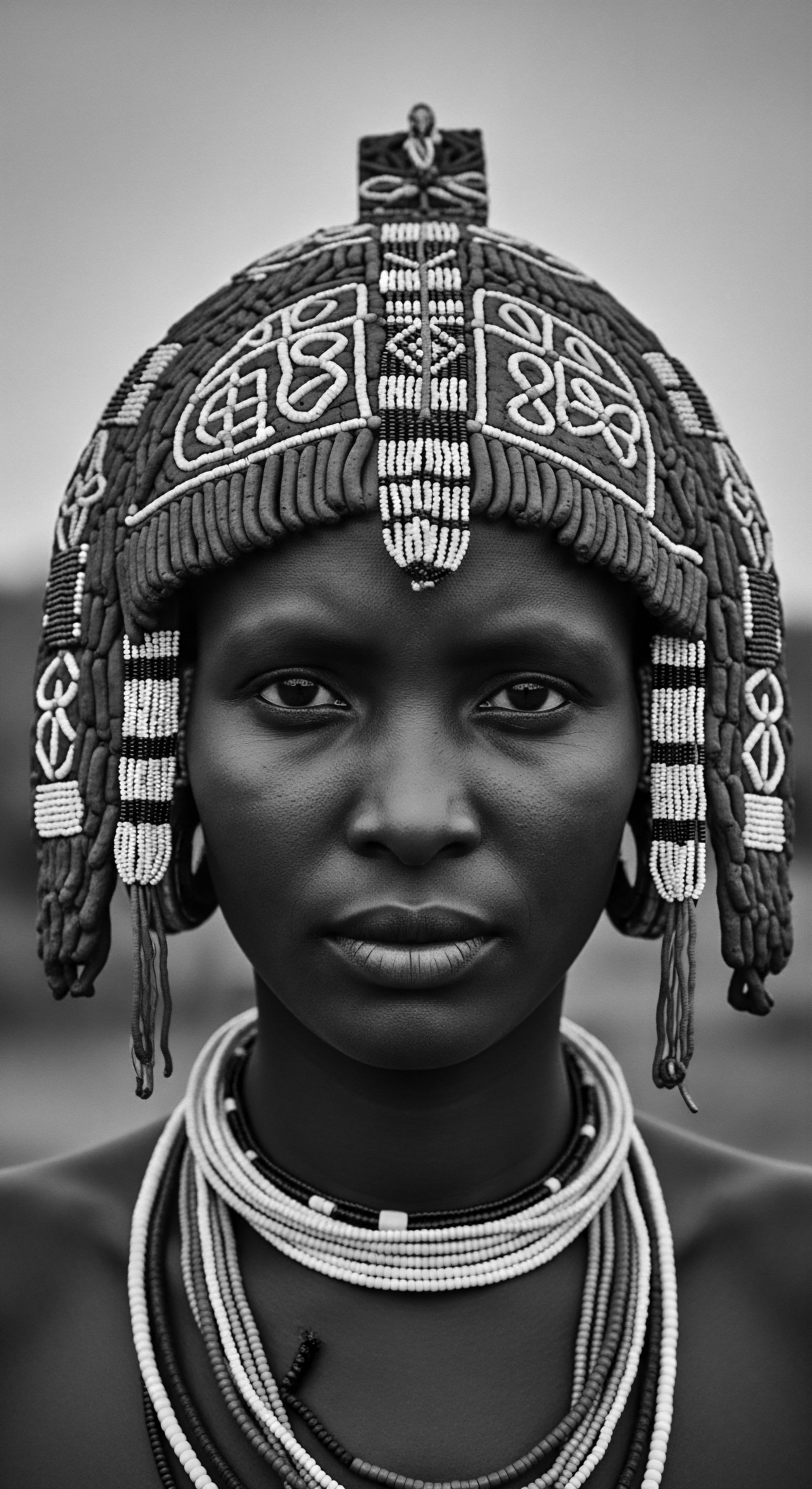
Genomic Architecture and Hair Morphology
From a scientific perspective, the distinct morphology of African hair is attributed to its unique follicular architecture, which is largely genetically determined. Research indicates that African hair follicles are characterized by a highly curved, helical form, contrasting sharply with the straighter, more circular follicles found in Asian and European hair. This curvilinear pathway within the scalp causes the hair shaft to grow with a pronounced spiral or elliptical cross-section, contributing to its characteristic coily and kinky texture.
Moreover, studies on hair biomechanics reveal that African hair, due to its inherent curvature and variations in shaft diameter, possesses areas of mechanical weakness, rendering it more susceptible to breakage upon external stress. While African hair may exhibit higher levels of apolar lipids, its structural characteristics, such as the frequent twists and turns along the fiber, can impede the even distribution of natural sebum, contributing to a perceived dryness. A deeper understanding of these genetic and structural properties is paramount for developing targeted, effective hair care solutions that align with the biological realities of textured hair, moving beyond generalized approaches that often prove detrimental. The precise genetic loci responsible for the intricate variations within Afro-textured hair remain an active area of scientific inquiry, underscoring the need for more inclusive research in hair biology.
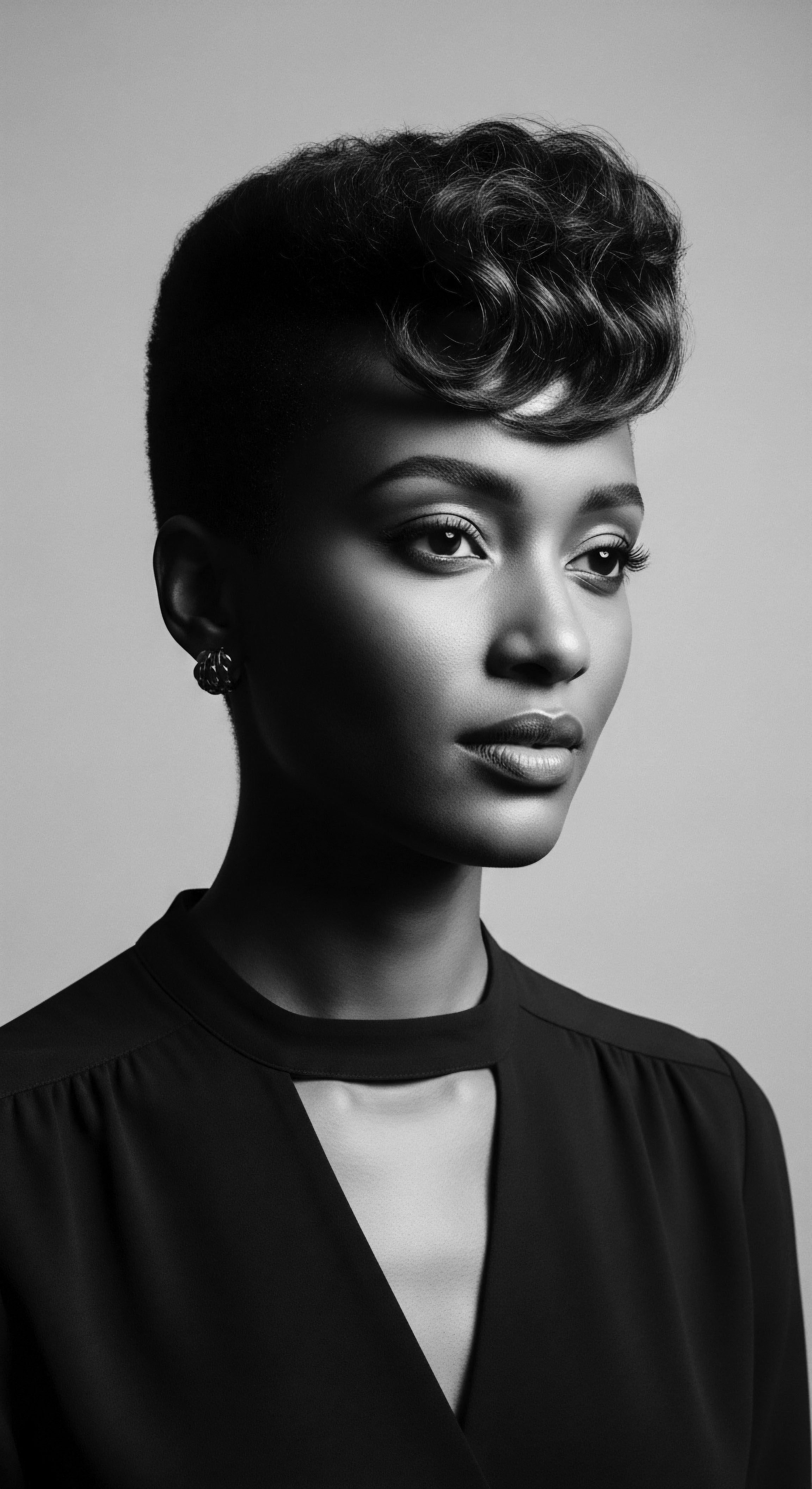
Sociocultural Stratification and Hair Discrimination
The historical weaponization of hair texture against African Communities, particularly during the transatlantic slave trade and its aftermath, represents a critical area of academic scrutiny. Enslavement initiated a deliberate campaign to dismantle African cultural identity, with forced hair shaving serving as a primary mechanism of dehumanization. Subsequently, a caste system emerged within plantation economies, where hair texture became a determinant of social standing and labor assignment.
Individuals with straighter hair textures were often granted comparatively less arduous domestic work, while those with tightly coiled hair were relegated to demanding field labor. This discriminatory practice laid the groundwork for persistent Eurocentric beauty standards that continue to devalue natural Black hair textures.
The psychological impact of this historical subjugation is profound and enduring. Academic research consistently highlights the link between hair discrimination and adverse mental health outcomes within Black communities. Studies show that Black women, in particular, often internalize negative messages about their natural hair, leading to anxiety, diminished self-worth, and a sense of cultural disconnection.
For instance, a qualitative study involving 56 African American women revealed that memories of negative hair experiences in school, including hair shaming, frequently resulted in embarrassment and anxiety, impacting their comfort in educational environments and interpersonal relationships (Mbilishaka, 2024). This evidence underscores how hair bias functions as a source of trauma and necessitates ongoing identity negotiation within academic and professional spaces.
The African Communities embody a profound legacy of resilience, where hair serves as a powerful testament to identity, resistance, and the continuous reclamation of cultural narratives.
The concept of “good hair” versus “bad hair,” rooted in proximity to Eurocentric ideals, became deeply entrenched within the Black community itself, influencing perceptions of beauty, social acceptance, and economic opportunities. This phenomenon, often referred to as Texturism, continues to affect educational and economic outcomes for Black individuals. Consequently, contemporary movements, such as the Natural Hair Movement, represent a collective endeavor to counteract these historical narratives and foster a more positive self-image grounded in ancestral heritage. These movements are not merely aesthetic trends; they are socio-political statements challenging systemic biases and asserting the inherent beauty and validity of textured hair in all its forms.
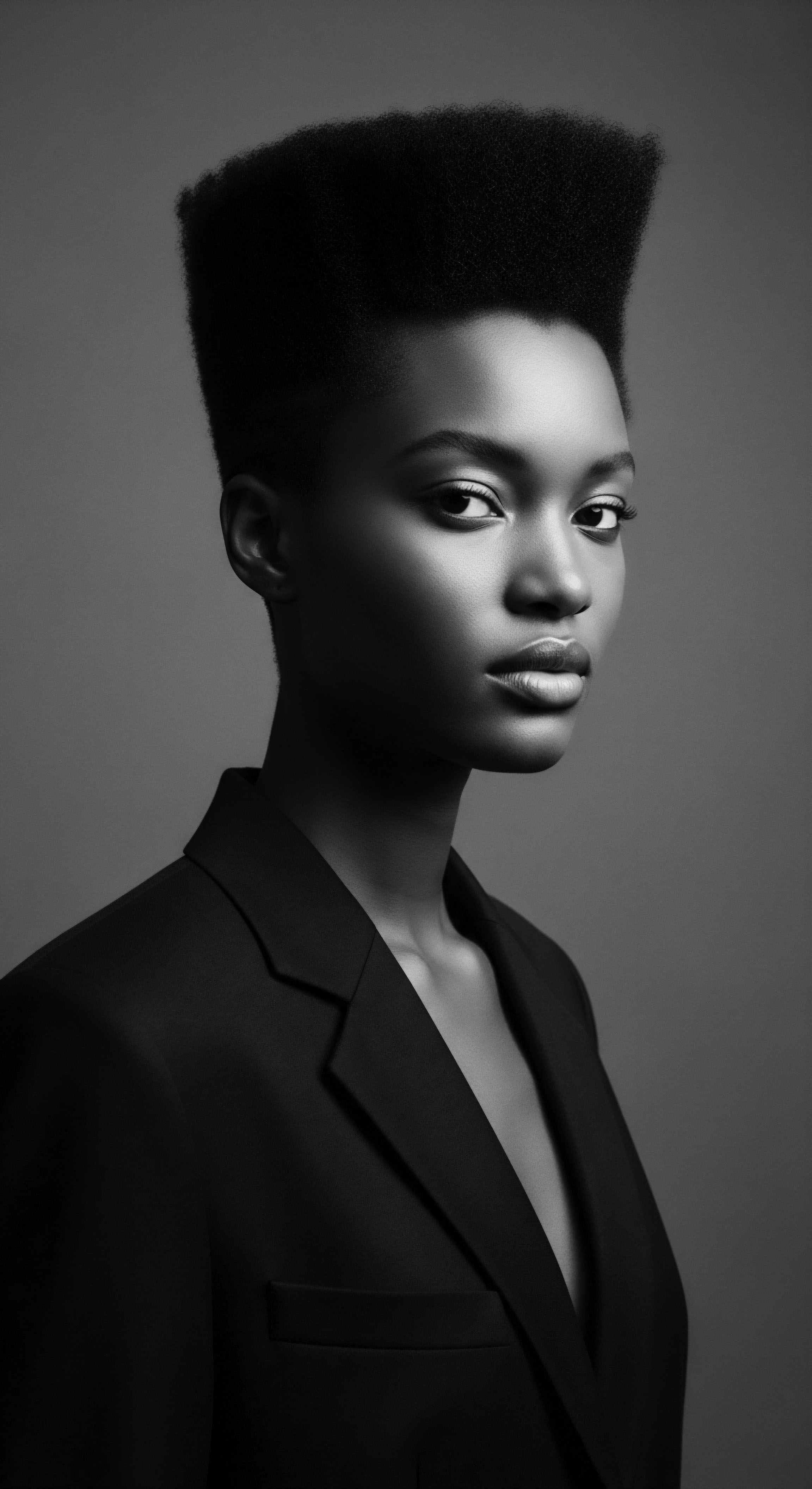
Ethnobotanical Wisdom and Modern Cosmeceuticals
The traditional hair care practices of African Communities are increasingly gaining recognition for their ethnobotanical wisdom, bridging ancestral knowledge with contemporary scientific understanding. Ethnobotany, the study of the relationship between people and plants, reveals that indigenous African communities have long utilized local flora for both medicinal and cosmetic purposes, including hair care. This deep ecological knowledge, passed down through generations, often incorporates plants with scientifically validated properties that support hair health.
For example, the use of Chebe Powder by women of the Bassara/Baggara Arab tribe in Chad is an anecdotal yet compelling illustration of this wisdom. Derived from the seeds of the Chebe plant, this powder is traditionally mixed with water and applied to hair to promote length retention and reduce breakage. Modern scientific inquiry into such traditional ingredients often seeks to validate their efficacy, moving beyond anecdotal evidence to understand the underlying phytochemical mechanisms. While comprehensive ethnobotanical studies specifically on hair care plants in Africa are still emerging, preliminary research suggests a significant correlation between plants traditionally used for hair and those with documented antidiabetic potential, hinting at a systemic, nutritional effect on overall health, including hair wellness.
- Botanical Diversity ❉ African landscapes offer a rich array of plants traditionally employed in hair care, from the moisturizing properties of Marula Oil to the cleansing capabilities of Rhassoul Clay and the antioxidant benefits of Rooibos Tea.
- Holistic Application ❉ Many traditional African hair treatments are applied topically, often for conditions like alopecia and dandruff, reflecting a holistic approach that considers both scalp health and hair fiber integrity.
- Sustainable Sourcing ❉ The ancestral practices emphasize sustainable harvesting of natural resources, ensuring the longevity of these plant-based remedies and supporting local communities.
The growing demand for natural and sustainable cosmetic products has amplified the importance of ethnobotanical research, encouraging collaboration between indigenous communities, researchers, and cosmetic companies. This collaborative spirit ensures the efficacy, safety, and quality of ethnobotanical-based hair care products, while also preserving invaluable cultural heritage. The academic pursuit here is not merely about identifying active compounds, but about recognizing and honoring the intricate systems of knowledge that have sustained African Communities’ hair care traditions for centuries.
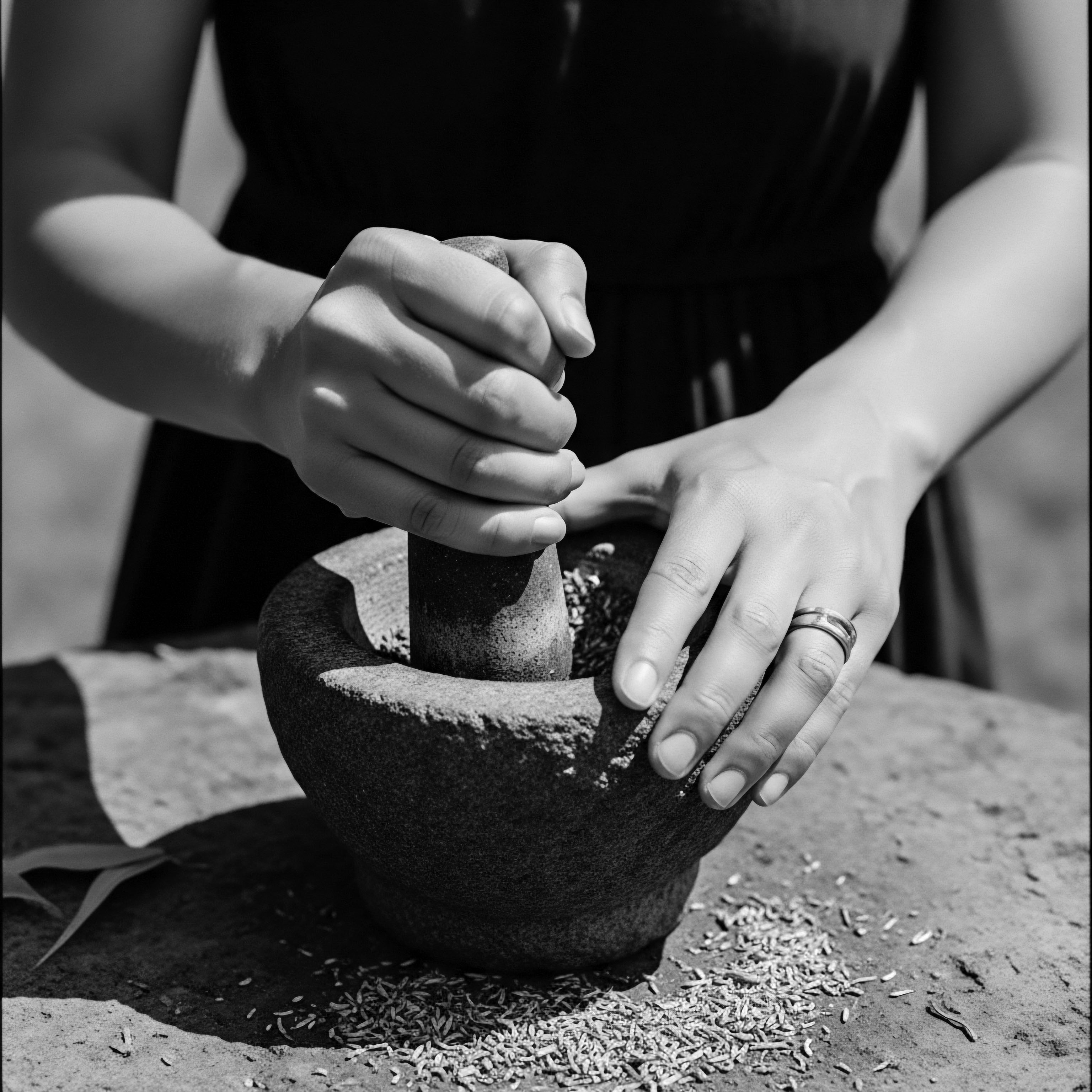
Reflection on the Heritage of African Communities
The journey through the African Communities, as etched into Roothea’s living library, reveals a narrative far richer and more profound than mere historical record. It is a resonant testament to the enduring spirit of textured hair, a vibrant chronicle of resilience, ingenuity, and profound cultural affirmation. From the ancient practices that saw hair as a sacred conduit to the heavens to the defiant acts of encoding escape routes within cornrows, the hair of African descendants has consistently been a living, breathing expression of identity and a powerful symbol of unwavering spirit.
This exploration underscores that the meaning of African Communities is not static; it is a continuous unfolding, a dialogue between ancestral wisdom and contemporary experience. The delicate balance between understanding the biological predispositions of textured hair and honoring the historical weight of its cultural significance shapes our approach to care. It invites us to view every coil, every kink, every strand not just as a physical attribute, but as a direct link to a lineage of strength, beauty, and creative adaptation.
The legacy of Madam C.J. Walker, for instance, a pioneering entrepreneur whose work empowered thousands of African American women by providing them with economic opportunities through hair care, stands as a beacon in this ongoing narrative (Bundles, 2001). Her efforts, rooted in addressing the specific needs of Black women’s hair, transcended commerce, fostering self-sufficiency and community building. This reflects the deep understanding within the African Communities that hair care is intimately tied to self-perception and collective well-being.
As we move forward, the commitment to the “Soul of a Strand” ethos compels us to continually recognize and celebrate the intrinsic value of textured hair heritage. It is a call to acknowledge the past, to understand the present, and to consciously shape a future where every strand tells a story of pride, authenticity, and boundless possibility, forever echoing the profound and vibrant spirit of the African Communities.
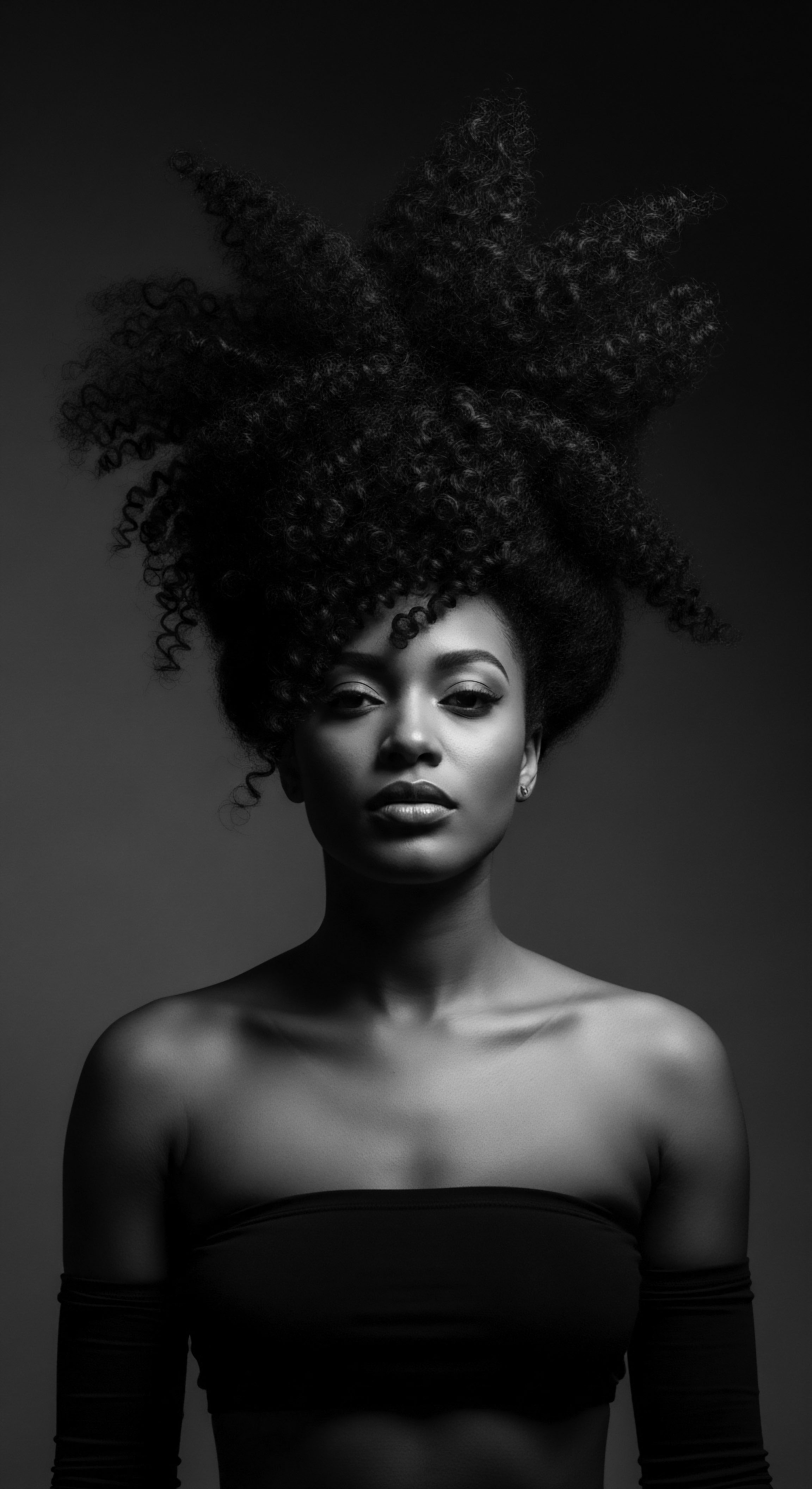
References
- Bundles, A. (2001). On Her Own Ground ❉ The Life and Times of Madam C. J. Walker. Scribner.
- Byrd, A. D. & Tharps, L. D. (2014). Hair Story ❉ Untangling the Roots of Black Hair in America. St. Martin’s Press.
- Dove, C. S. & Powers, J. L. (2018). Exploring the complexity of hair and identity among African American female adolescents in foster care. Journal of Black Psychology, 44(4), 368-385.
- Franbourg, A. Hallegot, P. Baltenneck, F. Toutain, C. & Leroy, F. (2003). Current research on ethnic hair. Journal of the American Academy of Dermatology, 48(6), S115-S119.
- Mbilishaka, A. M. (2018). PsychoHairapy ❉ Brushing Up on the History and Psychology of Black Hair. Psi Chi Journal of Psychological Research, 23(4), 274-282.
- Mbilishaka, A. M. (2024). Don’t Get It Twisted ❉ Untangling the Psychology of Hair Discrimination Within Black Communities. American Journal of Orthopsychiatry.
- Morrow, L. (1990). Hair ❉ A Cultural History. Rizzoli International Publications.
- Sherrow, V. (2006). Encyclopedia of Hair ❉ A Cultural History. Greenwood Press.
- Thompson, C. (2008). Black Women and Identity ❉ A Critical Examination of Hair in Canada. Canadian Woman Studies, 27(1), 103-108.
- Walker, A. (2021). The Joy Goddess of Harlem ❉ A’Lelia Walker and the Harlem Renaissance. Scribner.
